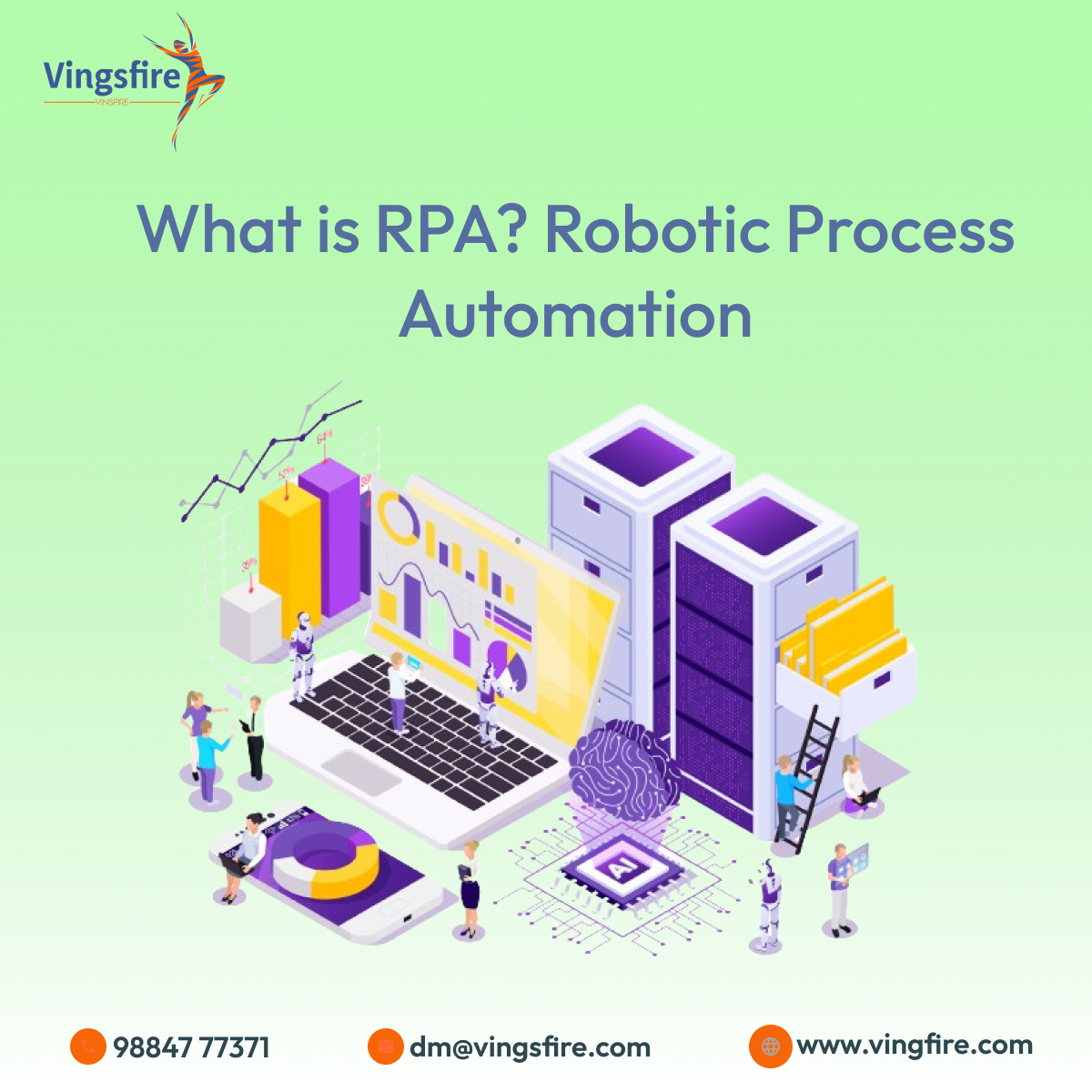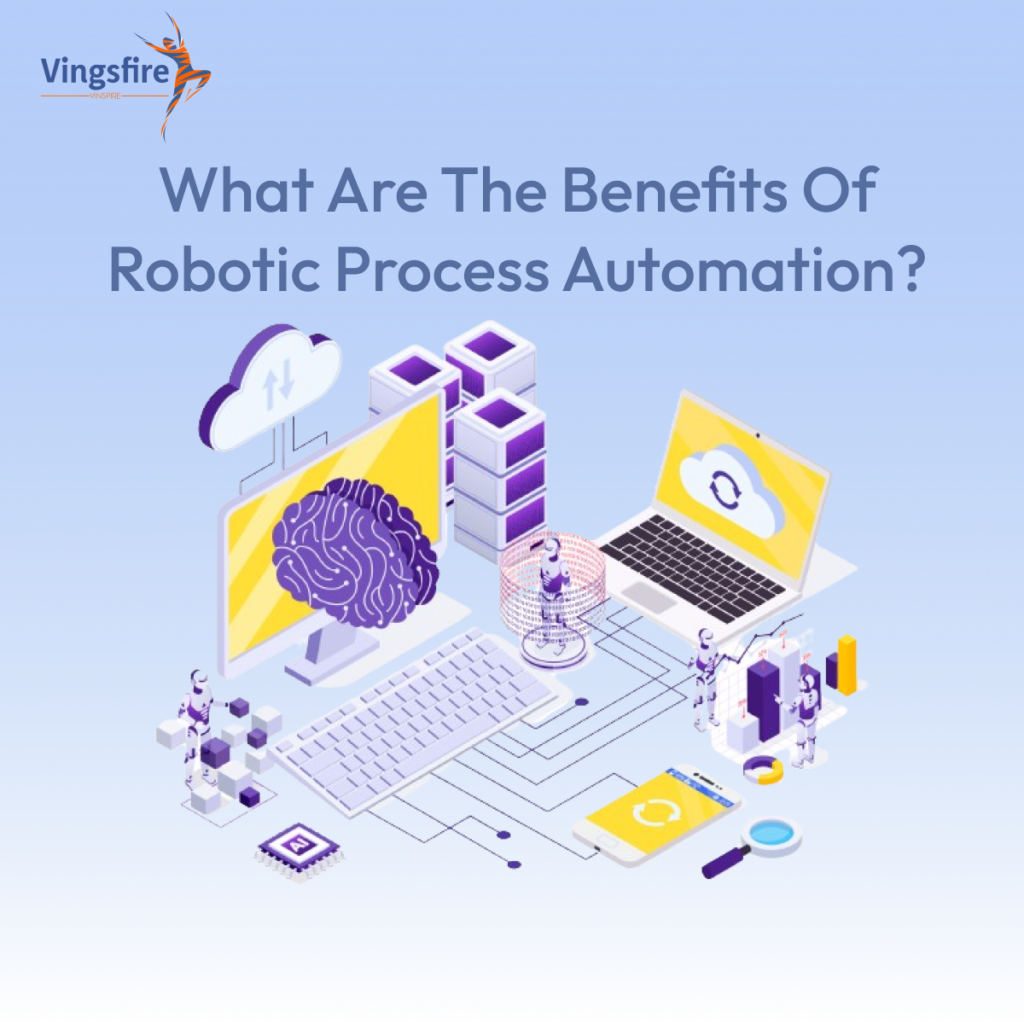Learn more About VingsFire:
1.LINKEDIN
3.FACEBOOK
Introduction:
In the rapidly evolving landscape of technology, businesses are constantly seeking innovative solutions to streamline operations, enhance efficiency, and reduce manual workload. One such revolutionary technology that has gained significant traction in recent years is Robotic Process Automation (RPA). In this blog post, we’ll embark on a journey to demystify RPA and explore its transformative impact process automation rpa.
1.What is RPA(process-automation-rpa)?
Defining Robotic Process Automation:
Robotic Process Automation, commonly known as RPA, refers to the use of software robots or “bots” to automate repetitive, rule-based tasks within business processes. These bots are designed to mimic the actions of human users interacting with digital systems, performing tasks such as data entry, data extraction, and transaction processing.
2.Key Characteristics of RPA:
Rule-Based Automation:
RPA operates based on predefined rules and instructions, making it ideal for tasks with clear and repetitive workflows.
Non-Invasive Integration:
RPA can seamlessly integrate with existing systems and applications without the need for significant changes to the underlying infrastructure.
User Interface Interaction of process automation rpa:
Bots interact with the user interface just like a human, navigating through screens, entering data, and performing actions to complete tasks.
Scalability:
RPA allows for the deployment of multiple bots to handle a high volume of tasks simultaneously, making it scalable to meet the demands of various business processes.
3.How Does RPA Work?
- Bot Development: Developing an RPA bot involves mapping out the specific steps of a given process and creating a set of instructions for the bot to follow. This can be achieved through visual design interfaces or scripting languages, depending on the RPA platform used.
- Bot Deployment: Once the bot is developed, it is deployed to the production environment. The bot can then access the necessary systems and applications, interacting with them to execute the defined tasks.
- Monitoring and Management: RPA platforms often come equipped with monitoring and management tools that allow organizations to track the performance of bots, monitor task completion, and address any issues that may arise during the automation process.
4.Benefits of Process Automation with RPA:
- Increased Efficiency: RPA accelerates task completion, reducing the time and effort required for manual processes.
- Error Reduction: Bots perform tasks with precision, minimizing the risk of human errors that may occur in repetitive tasks.
- Cost Savings: By automating routine tasks, organizations can achieve significant cost savings by optimizing resource utilization.
- Enhanced Scalability: RPA enables businesses to scale their operations effortlessly by deploying additional bots as needed.
5.Challenges and Considerations:
- Process Suitability: Not all processes are suitable for automation. It’s crucial to assess the complexity and suitability of a process before implementing RPA.
- Security Concerns: As bots interact with sensitive data, ensuring robust security measures is imperative to safeguard against potential vulnerabilities.
- Human Workforce Impact: While RPA enhances efficiency, it may also impact the traditional workforce. Adequate training and change management strategies are essential to ensure a smooth transition.
Conclusion:
In conclusion, Robotic Process Automation is a transformative technology that holds immense potential for organizations looking to optimize their processes and gain a competitive edge. By harnessing the power of automation, businesses can achieve increased efficiency, cost savings, and improved accuracy in their day-to-day operations. As the realm of RPA continues to evolve, staying abreast of the latest developments in process automation is key to unlocking its full potential






